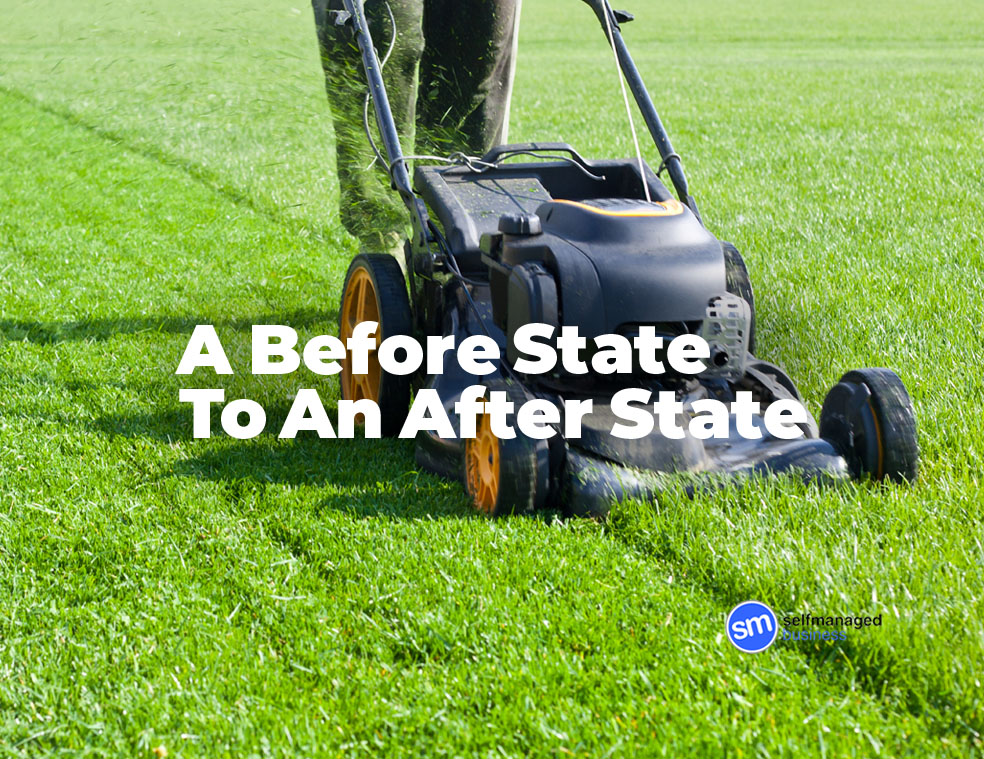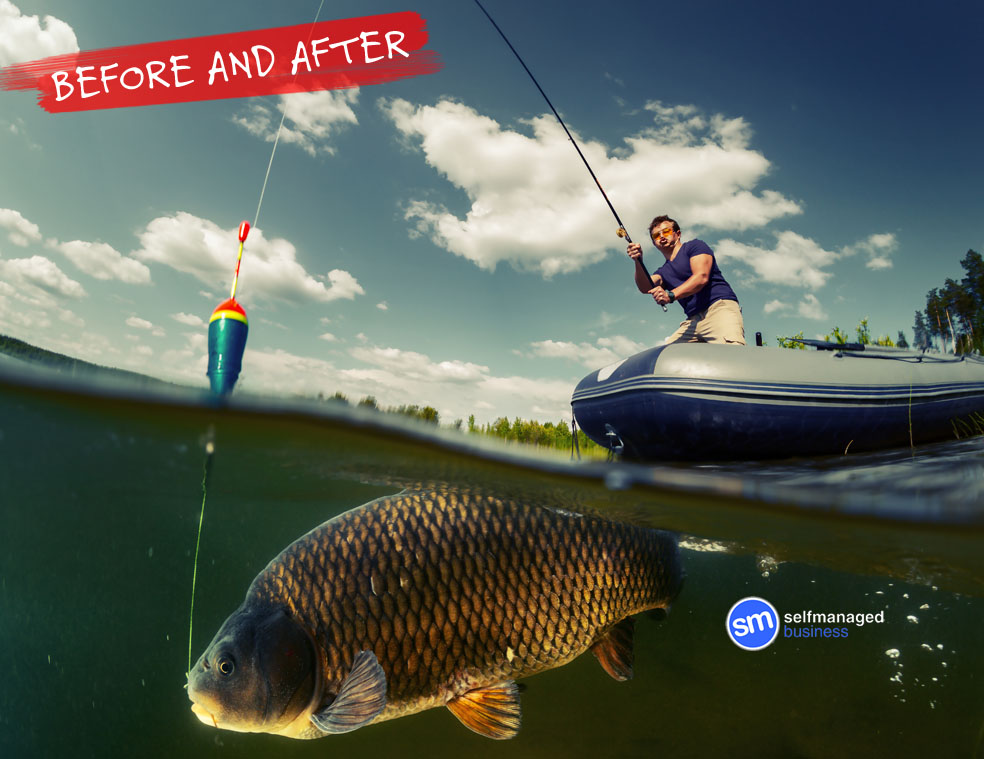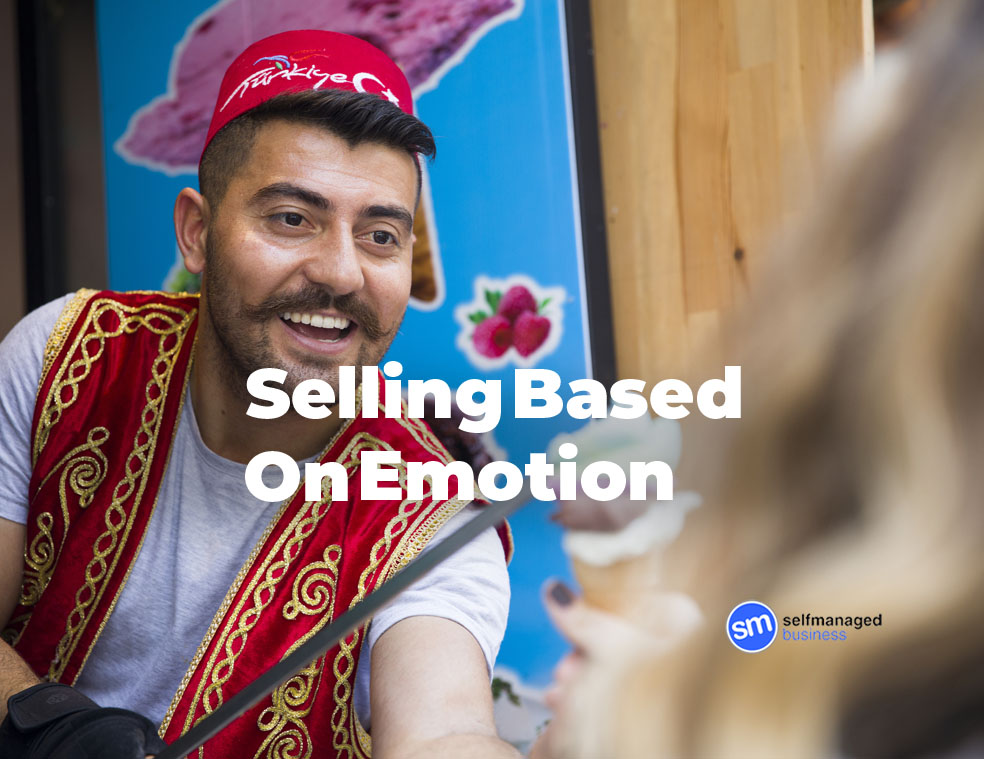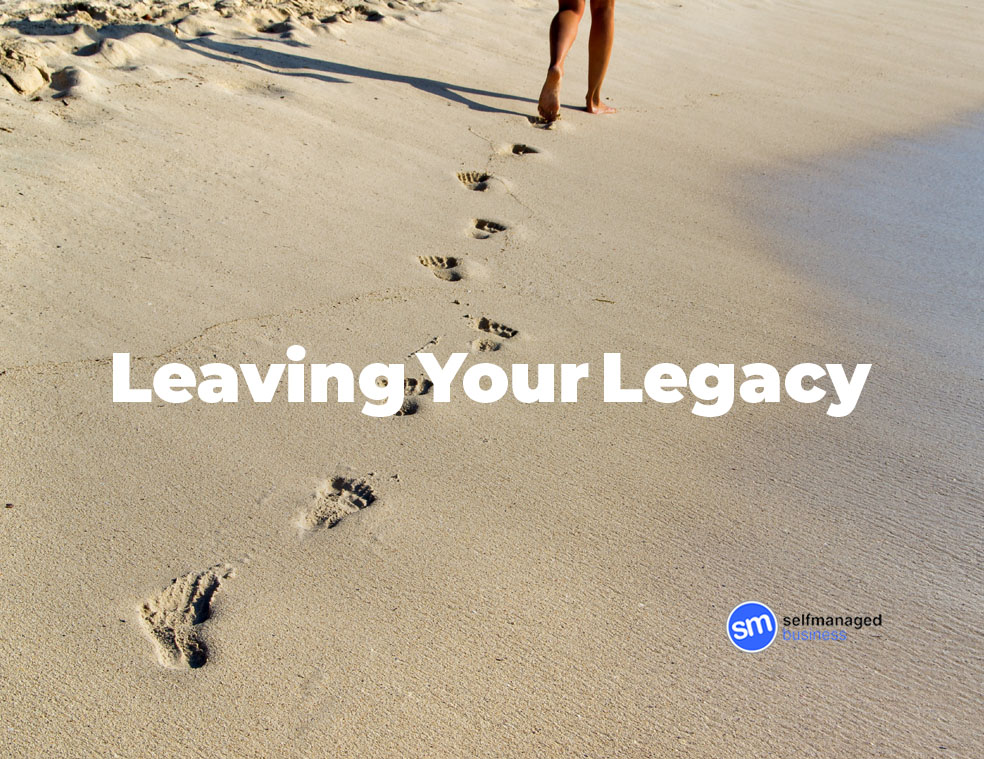Moving Your Customer From A Before State to An After State

THE BEFORE AND AFTER STATE
Good day. It’s Anthony Manly here from selfmanagedbusiness.com. Today I want to talk to you about moving your customer from a before state to an after state. And what a lot of people don’t understand is that the old saying goes, “people don’t buy features, they buy benefits”. And I can tell you a story that takes me back to when I went to a car yard one day and I specifically was looking at a specific type of car.
And when I got into the car lot, all this guy I could talk about was the features. It’s got air conditioning, it’s got this, it’s got that. It’s got cruise control. And I’m thinking to myself, I don’t care what the features it’s got. I just want to take this car for a test drive to see if it suits what I want it to do for me.
Then what I did is I sat back and I said to him repeatedly, said, can you help me understand what the benefits of me owning this car? And he was a bit stumped by my question.
Now, when I stumped by my question, what you’ve got to realize is that there’s an old saying that people don’t go to, say, bunnings or a hardware store to buy a drill, for example.
They go to the hardware store to buy a hole, either put it in a wall, or to do whatever they’re doing, right? So if someone wants to drill a hole, they’re going to the hardware store to buy a hole, essentially.
It sounds weird, I know.
But I want to talk to you about going from your before state to your after state.
And what we need to focus on its benefits. And the way we focus on benefits is by understanding where your customer is currently sitting.
So if your customer is in fear or frustrated, I want to just explain to you something that I learned from Taki Moore, a million-dollar coach.
He explains a technique that he calls the four forces.
What are the 4 types of forces?
Now, these four forces, what it actually is, is he talks about what are the three fears that lead to the one frustration? And then on the flip side of that, what are the three wants that lead to that person’s aspiration so your ideal, perfect customer, for example excuse me, just balances camera.
Now, when you think about it, breaking that down, three fears.
Strong interaction.
The way you can do it is and I’m just going to just go through here. You need to understand where your ideal prospect is.
And the example I used before, is where people go to a hardware store to buy a hole, they don’t go to buy a drill.
And if you think about it, when you first understand whether in their before state, it’s, well, what do they have?
So I’m going to use another example, which is a leaky roof.
So someone could have a leaky roof.
The fear is that it’s going to leak, it’s going to grow moldy, and it’s going to cause damage to the inside of the house. It can cause several different things.
The questions that I’m proposing here apply to the fears to understand what people’s fears are going a little bit deeper around these fears. It’s more about like, how do they feel?
So let’s understand how they feel.
I used to be worried about the future, and my family, if I were to die.
So that’s before the state, so I was concerned.
And then I came across life insurance or whatever the case may be, which made my future look up.
So the first question is, what do they have?
The second question is how do they feel?
Then the other question we need to understand is how is their average day different.
So I used to drive to work every morning in a boring old car, the fourth day.
And now I’m excited to drive to work because I’m in a nice fancy new car.
So that was the example I used before about cars, right?
So I was embarrassed.
So the fear I had was, oh, people are going to judge me, or is my car going to break down? Or probably the biggest fear for me was my car was going to break down because I had an older style car.
Now, the fourth thing that I want you to understand is your status, right?
So some people live by statuses, and you’ve probably seen it with mothers, you’ve probably seen it with managers. Everyone’s got some form of status. So I’m going to use a good example.
I used to be a good father to my children, used to be a good father to my children before State, but now I’m a super dad because I bought the whole family tickets to Disneyland.
So that’s a good example.
Another example could be that you could have the crappiest lawn in the street until you discovered a green lawn, for example. And now I’ve got the best house in the street with the greenest lawn.
Can you see if the status has changed?
Like, look at me type of scenario.
Now, I’m not saying that that’s what it should be, but I’m just using those as examples of what you can choose.
Now, you must determine your customer’s ideal state, right? Because when you articulate it in such a way that here are your three fears, what’s your one frustration? And then you move that into the future, which is their wants and aspirations. It’s normally the flip of their fear.
What you’ll find is that you’re articulating it back to your ideal, perfect prospect in such a way that they can relate. And once they relate, that’s when they will start to look at your product or service a little bit closer. After you’ve articulated this in such a way, like, really succinctly and precisely, then start to look at what.
So what we like to say is, like, enough.
The “Why, What, How, What If”
So the format is a learning system, which is I think it’s by Denise McCarthy, I think was the lady that brought it up, which is Why What, How, What If and that is how everybody seems to learn, like in the schooling system. And she came up with this.
Now what we do is we’ve adopted that, which is the Why, which is what I’ve just explained, which is the three fears, one frustration, and then flipping those over from three fears, one frustration to three wants and one aspiration, and then getting stuck into the what.
Right?
So when we say the What, what we’re talking about there is, is we’re describing what it is that is the new view of the world. And when you start talking about a What, you can start to use metaphors.
So, for example, the fear is like, with your marketing, I’m not getting enough leads. Well, the flip of that is, is like, you’ve got an avalanche of leads or a flood of leads.

Now, What that could be is like, before, I used to cast a broad net to go fishing.
Now I just throw my line in one direction, and I’m only focused on this specific type of fish, and I use this specific type of bait. Can you see how What relates to the fears, frustrations and wants, and aspirations?
Now, once you’ve moved through the what framework, what part of the format framework sorry.
You then come into the how the side of things.
Now, many people get hung up on the How, and they like to talk about the how specifically on like, you see people on Facebook videos so hooked up on it.
What you need to do is articulate it concisely. But what you also need to do is explain to people how they can achieve this with minimal effort and get the result they’re looking for.
So take a chunk of your overall solution.
Not give them everything all at once.
So don’t give them the whole pizza. Just give them a slice of the pizza, so to speak.
Now, the fourth part to it that Benice uses is What if.
I like to use what’s next.
So in other words, once you’ve understood this particular concept, you’ve implemented this, what’s the next part that I need to move on to?
So once you’ve got enough leads coming into your business, what’s the next step you need to do?
Do you need to understand how you convert those leads?
So, look, I’ve just described to you a couple of frameworks there.
So number one, understand, first of all, where your customer currently is.
So in their before state, speak benefits, Don’t Speak features.
The second part of this is what you need to understand is in their future state, where are they going to be in their future state?
And what are the wants and aspirations, then walk them through a what scenario.
So think of a metaphor that can apply to that.
So moving from fears and frustrations and wants for aspirations. And then after you’ve done that, move them through the solution.
So walk them through, but only a bite-size chunk.
Don’t give them everything.
And when I say don’t give them everything, I’m not saying, like, don’t give them all of your information. What I’m saying is, like, make it super laser-focused on that fear, frustration, those fears, frustrations, and wants and aspirations.
Don’t step outside of that.
And then when it comes to what’s next, what’s the next step that they need to take to achieve what they want to achieve?
So I hope you’ve got value out of this video and I’ll talk to you shortly.
P.S. WHENEVER YOU'RE READY...
Here Are 4 Ways I Can Help You
And Your Coaching Business Right Now!
Previous
Next






